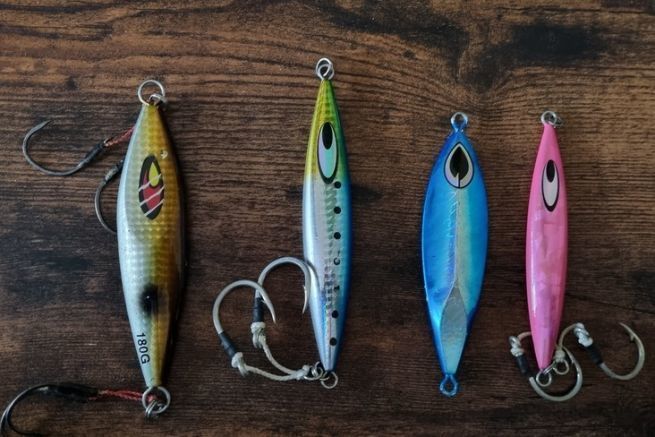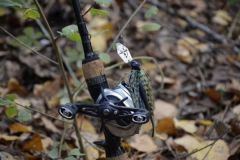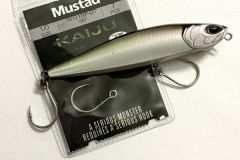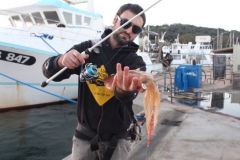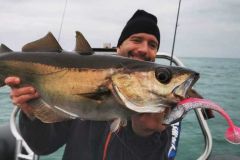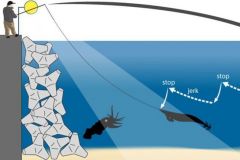Choosing your jig
When fishing, selecting the right jig is crucial. The weight of slow jigs varies greatly from brand to brand, ranging from 60 g to over 250 g, making the choice not always easy. Of course, as with all vertical sea fishing, the greater the depth, the greater the weight of the jig. However, in slow jigging, the aim is not to hit the bottom at full speed, but rather as slowly as possible. When the drift is low, light jigs, even at great depths, often trigger more bites as they glide more easily.
Jig color
Each jig model comes in a range of colors that are easy to get lost in. Beyond 100 meters from the surface, there is very little sunlight and fish don't perceive colors as we do. The use of phosphorescent colors increases the chances of our jig being spotted in the darkness of the deep. On the contrary, when fishing shallow, colors capable of reflecting light better imitate distressed prey. Whether natural or fanciful, each color will have its day of glory, so it's important to vary to find the right one.
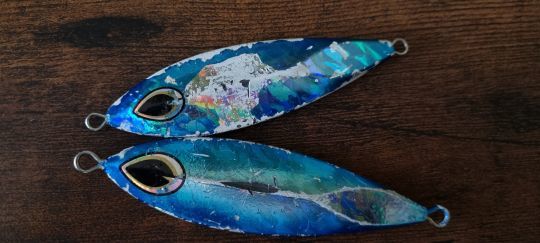
Rod and reel set
Slow jig animation requires a wide range of movement. Rods designed for this type of fishing are between 1.80 and 2.00 m long, making it easy and effortless to animate jigs weighing over 180 g. Power ranges generally reach a maximum of 200 g, which is more than enough to fish at depths of over 150 metres. Of course, the reel must be fitted with plenty of braid, a minimum of 300 metres. Some reels have a single crank handle, as on a spinning reel. This allows you to apply more force thanks to its length, and makes fighting easier. Double cranks also work, but are less suitable.
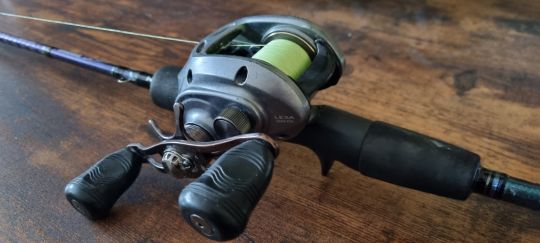
Garnishing your reel
In slow jigging, braid is a must on a reel, as it greatly increases sensitivity. Its diameter/resistance ratio allows a large amount of line to be stored on the spool. Multicolored braids, marked with a color change every 10 meters, offer better tracking of the depth at which our jig is located. The ideal resistance for slow jigging is around 30 lb. Preferably choose an 8-strand braid or even a 12-strand braid if you want to go full time with this fishing technique. As for the leader, a length of 7 to 12 metres is ideal, depending on the clarity of the water. The leader should be at least as strong as the braid, i.e. 30 lb, which, depending on the brand, is equivalent to 40 hundredths fluorocarbon.

 /
/ 